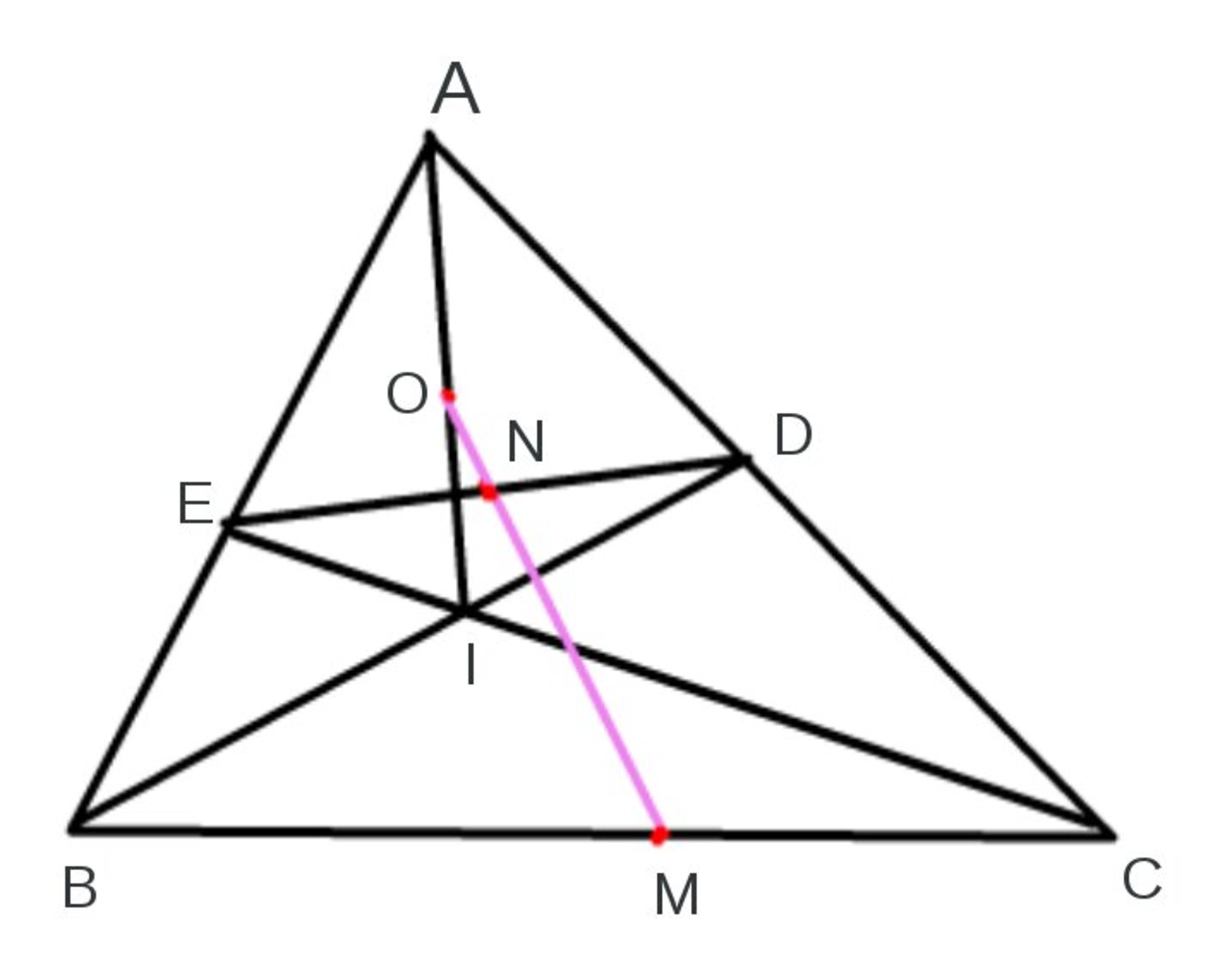Geometry

any triangle
Any and drawn such that lies on and lies on
drawn
and intersect at
Prove that are collinear
No vote yet
9 votes

any triangle
Any and drawn such that lies on and lies on
drawn
and intersect at
Prove that are collinear
Easy Math Editor
This discussion board is a place to discuss our Daily Challenges and the math and science related to those challenges. Explanations are more than just a solution — they should explain the steps and thinking strategies that you used to obtain the solution. Comments should further the discussion of math and science.
When posting on Brilliant:
*italics*or_italics_**bold**or__bold__paragraph 1
paragraph 2
[example link](https://brilliant.org)> This is a quote# I indented these lines # 4 spaces, and now they show # up as a code block. print "hello world"\(...\)or\[...\]to ensure proper formatting.2 \times 32^{34}a_{i-1}\frac{2}{3}\sqrt{2}\sum_{i=1}^3\sin \theta\boxed{123}Comments
We will use normalized barycentric coordinates A=(1,0,0), B=(0,1,0), C=(0,0,1). Then D=(p,0,1−p), E=(q,1−q,0). Now N is a midpoint of DE, hence N=(2p+q,21−q,21−p) Equation of line BD is pz=(1−p)x and equation of line CE is (1−q)x=qy Intersecting these lines we get I=(p+q−pqpq,p+q−pqp(1−q),p+q−pqq(1−p)) Now O is midpoint of AI, hence O=(2(p+q−pq)p+q,2(p+q−pq)p(1−q),2(p+q−pq)q(1−p)) And M is midpoint of BC, so trivially M=(0,21,21) Now note that ∣∣∣∣∣∣2p+q2(p+q−pq)p+q021−q2(p+q−pq)p(1−q)1/221−p2(p+q−pq)q(1−p)1/2∣∣∣∣∣∣=0 Hence M,N,O are collinear.
Log in to reply
I'm not sure I understand your last step. Are you taking the determinant of a matrix? I'm assuming that's what you're doing. How does that tell you that the three points are co-linear?
Log in to reply
The main idea is: If the area of a triangle is 0, then the vertices lie on a straight line.
Note that once you found the coordinates of the points, you could go about finding the line that these three points are on. However, unless the ratios are immediate, this often requires a bunch more algebra. Showing that the area is 0 could be more straightforward.
Barycentric coordinates merely make the algebra much easier / nicer. A coordinate geometry approach would work similarly, though with much uglier values.
See here http://zacharyabel.com/papers/Barycentric_A07.pdf page 5.
This is the Newton-Gauss line of a complete quadrilateral.
Why did every comment gets vote down?